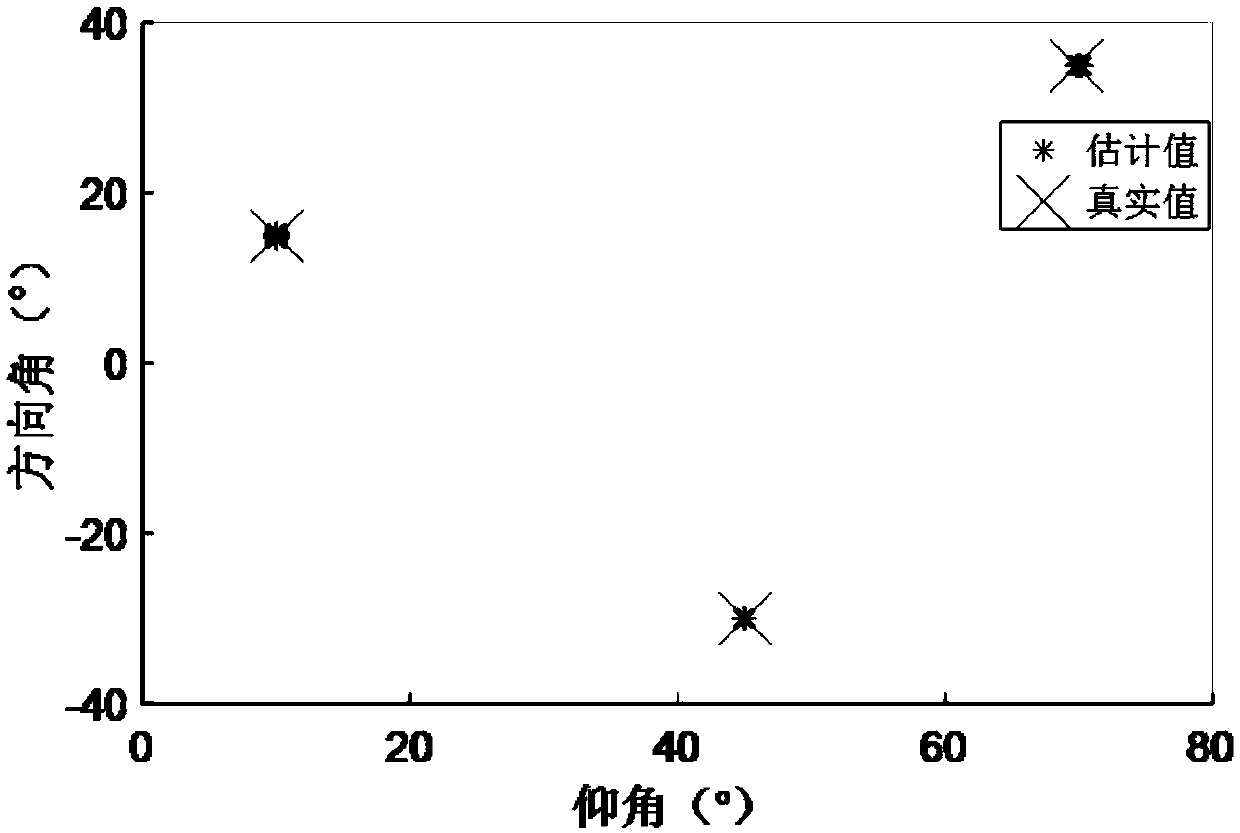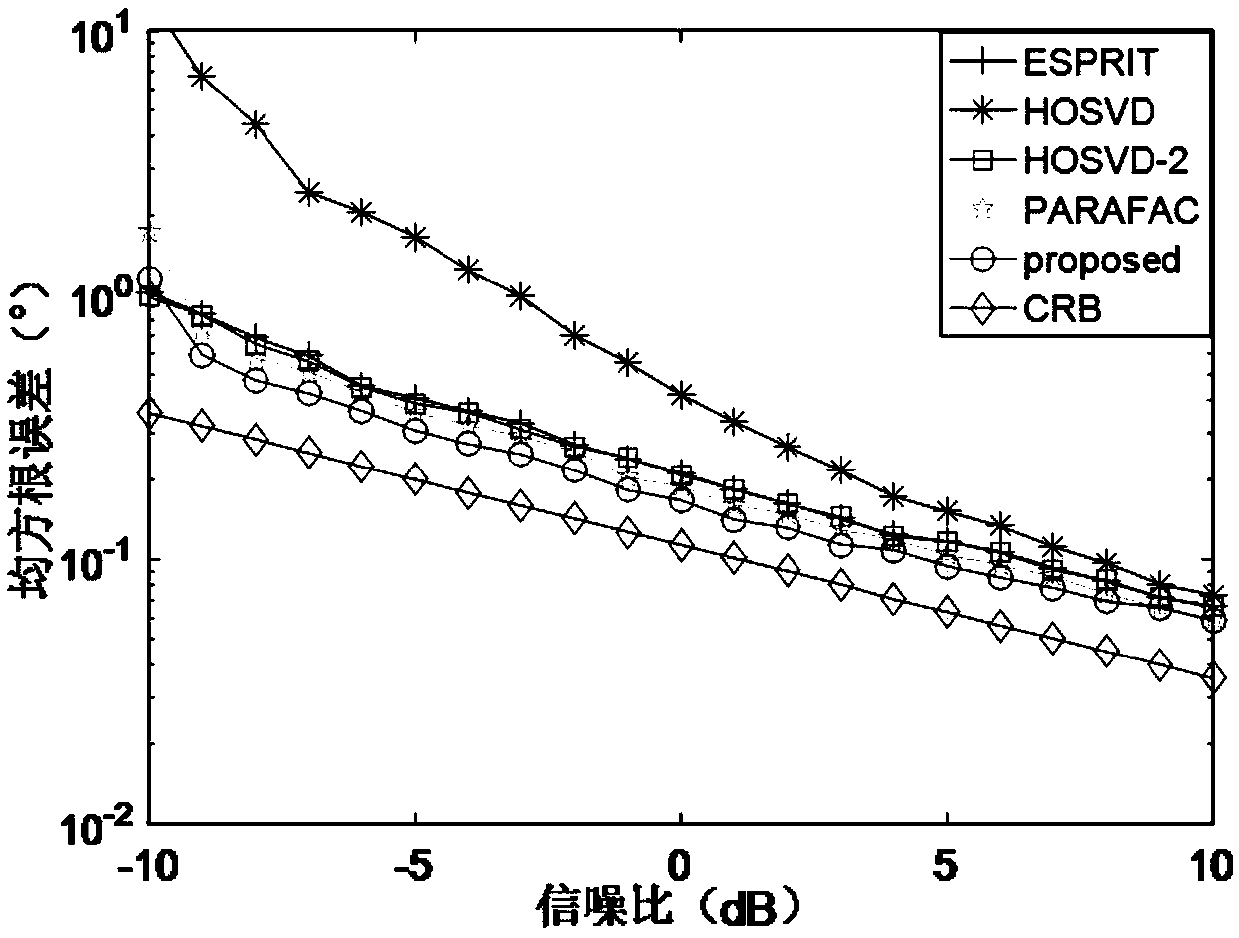Plane array angle estimation method based on four-linear decomposition
A planar array and angle technology, applied in direction finders using radio waves, radio wave direction/deviation determination systems, etc., can solve problems such as failure, unsuitable engineering applications, and inability to effectively separate signals and noises
- Summary
- Abstract
- Description
- Claims
- Application Information
AI Technical Summary
Problems solved by technology
Method used
Image
Examples
Embodiment Construction
[0019] In order to make the objectives, technical solutions and advantages of the present invention clearer, the present invention will be described in further detail below in conjunction with the accompanying drawings and embodiments. It should be understood that the specific embodiments described here are only used to explain the present invention and are not intended to limit the invention.
[0020] The present invention provides a method for estimating the angle of a plane array based on four-linear decomposition, wherein the method for estimating the angle of a plane array based on four-linear decomposition comprises the following steps:
[0021] S1. Construct a non-uniform noise covariance matrix according to the array signal model of the receiving array element, and further construct a fourth-order tensor of the non-uniform noise covariance matrix;
[0022] S2. Initialize the receiving direction matrix, the transmitting direction matrix, and the target covariance matrix...
PUM
 Login to view more
Login to view more Abstract
Description
Claims
Application Information
 Login to view more
Login to view more - R&D Engineer
- R&D Manager
- IP Professional
- Industry Leading Data Capabilities
- Powerful AI technology
- Patent DNA Extraction
Browse by: Latest US Patents, China's latest patents, Technical Efficacy Thesaurus, Application Domain, Technology Topic.
© 2024 PatSnap. All rights reserved.Legal|Privacy policy|Modern Slavery Act Transparency Statement|Sitemap



